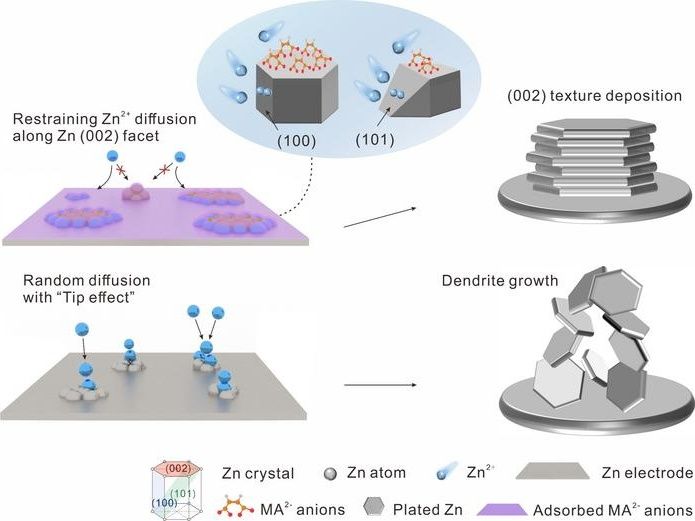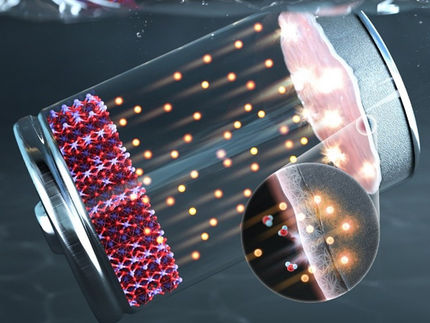Novel strategy stabilizes zinc-ion batteries
Stop harmful zinc dendrites
According to research published in Advanced Functional Materials recently, a team led by Prof. HU Linhua. from Hefei Institutes of Physical Science (HFIPS), Chinese Academy of Science (CAS) found that the addition of disodium maleate (DMA) in the electrolyte of aqueous zinc-ion battery would lead to the preferred Zn (002) texture growth, which could effectively inhibit the Zn dendrite growth and ameliorate the reversibility and cyclability of batteries.

The schematic diagrams for Zn deposition in different electrolytes.
LI Zhaoqian
"That means the DMA can stop harmful zinc dendrites from growing and improve the ability of batteries to be recharged and used multiple times," said Dr. LI ZHAO Qian, member of the team.
Aqueous zinc-ion batteries (AZIBs) have nowadays stimulated widespread attention for their safety, reliability, and cost-effectiveness. The severe Zn dendrite growth and severe side-reactions have become the major roadblock to the widespread commercialization of AZIBs. The Zn (002) crystal plane owns smooth surface atom arrangement, even interfacial charge density, and low surface energy, favoring the uniform Zn2+ deposition and better anti-corrosion ability. Therefore, tuning the states of the plated Zn crystal promises to fundamentally obtain highly stable and reversible metal anodes.
In this study, researchers constructed an electrocrystallization strategy to induce Zn (002) texture growth. The adsorption of DMA induces Zn (002) texture growth and inhibits harmful side reactions.
"When we tested the battery, it was able to work for over 3200 hours, even when used at high power levels," explained Dr. LI Zhaoqian.
They tried it at harsh conditions of 30 mA cm-2 and 30 mAh cm-2. the Zn anode exhibits an ultralong cycling lifespan of 120 h.
They also tested the battery with different materials and found that it worked well with them, even after many cycles. They assembled Zn//Cu batteries with average Coulomb efficiency of 99.81% after 3000 cycles. Meanwhile, the Zn//NH4V4O10 full battery delivers a long-term stability with capacity retention of 92.3% after 10000 cycles.
This research tailored the migration behavior of Zn2+ at different crystal planes by adsorbed DMA molecule layer to induce Zn (002) crystal growth, which provided a promising strategy for achieving the dominant texture of zinc anode at molecule level, and was expected to be applied to other metal anodes.
Original publication
Other news from the department science
Most read news
More news from our other portals
See the theme worlds for related content
Topic World Battery Technology
The topic world Battery Technology combines relevant knowledge in a unique way. Here you will find everything about suppliers and their products, webinars, white papers, catalogs and brochures.

Topic World Battery Technology
The topic world Battery Technology combines relevant knowledge in a unique way. Here you will find everything about suppliers and their products, webinars, white papers, catalogs and brochures.




























































